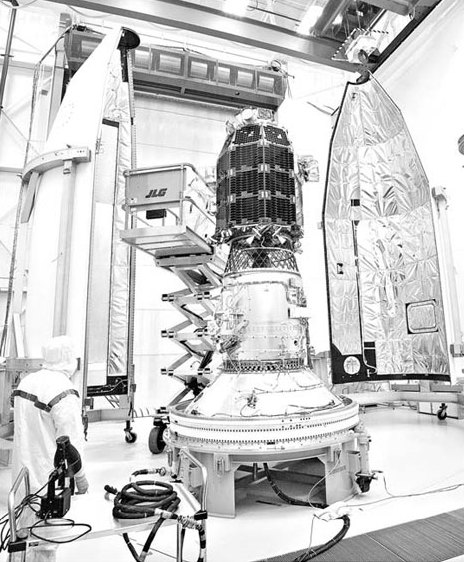New moon probe prompts a debate
A small, unmanned spacecraft that is on its way to the moon highlighted political questions about what NASA should do next.
The Smart Car-size Lunar Atmosphere and Dust Environment Explorer was launched September 6 and will take 30 days to get into orbit around the moon. It will spend the next 30 days checking its equipment and proceed with scientific work for 100 days, searching for water molecules in the atmosphere and gathering data about the curious substance known as lunar dust. Then the probe, which goes by the acronym Ladee, will take a death plunge into the moon's surface.
The results of the research could be helpful in preparing for future manned missions to the moon.
Yet NASA does not have any such missions planned. The Obama administration canceled the program, called Constellation, in 2010, calling it over budget and behind schedule.
|
NASA's new unmanned spacecraft, Ladee, will take 30 days to get into orbit around the moon, where it will search for water molecules. Terry Zaperach / NASA, via Agence France-Presse - Getty Images |
"If you're going to fly this mission with the goal of understanding the atmosphere and how dust might affect future human missions, and you don't have the future human missions, then part of the reason for the mission disappears," said David Kring, senior staff scientist at the Lunar and Planetary Institute, a NASA-financed research institute in Houston, Texas.
Other nations have taken a new interest in Earth's satellite. China plans to land its first exploratory rover there by the end of the year. India, Japan, Russia and the European Space Agency have unmanned missions in the works. And Google is sponsoring a contest called the Lunar X Prize, offering $20 million to the first company to send a robotic spacecraft to the moon by 2015 and make it perform certain tasks.
Some members of Congress have recently called on NASA to return to the moon rather than pursuing its current space objectives, such as landing astronauts on a captured asteroid.
The Ladee spacecraft cost $125 million and the mission was budgeted for $250 million, said a NASA spokesman. The cost would drop for subsequent craft using the same design.
Richard Elphic, project scientist for the Ladee mission, said scientists are trying to find out how the ice on the moon's poles got there. They speculate that water molecules in the moon's atmosphere may have migrated toward the poles and frozen in place, he said.
Evidence of water below the moon's surface was discovered in recent years by a NASA-financed instrument aboard an Indian spacecraft. Data collected from the coming mission could help complete the picture of the moon's water cycle.
The orbiter will also examine the movements of lunar dust, which is extremely fine but with jagged, sharp edges, since there is no wind or water on the moon's surface to wear it down. "If it gets into your eyes or your skin, it's abrasive and it hurts," said Sarah Noble, program scientist for the mission.
The dust poses a risk to robots and humans alike, as it can wreak havoc on equipment and spacesuits. Dr. Elphic said that understanding the way the dust moves through the atmosphere will help scientists better prepare for longer missions on the moon.
The New York Times



















